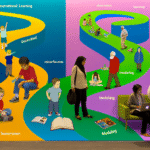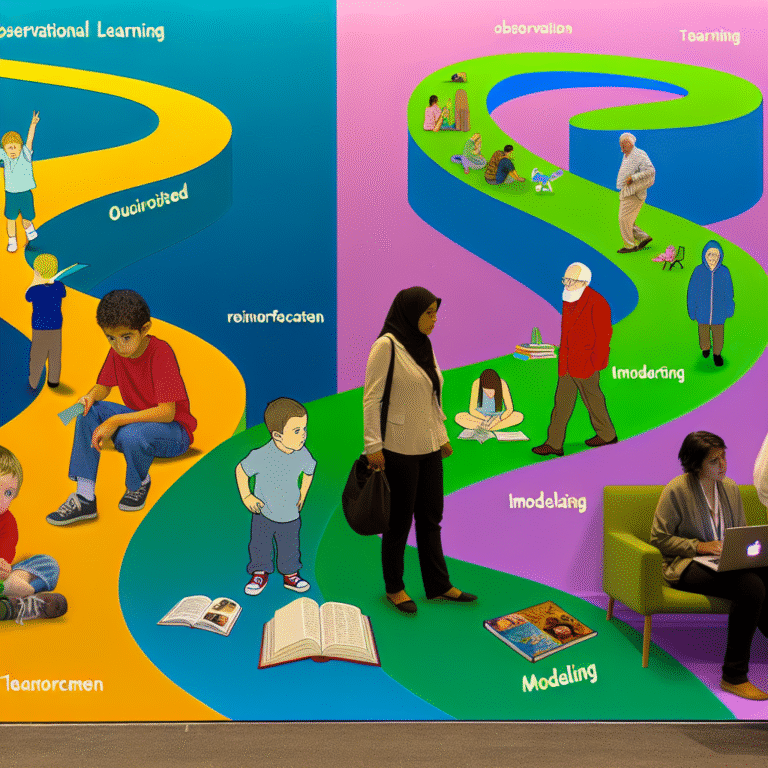
Introduction
In today’s volatile world, the rise in juvenile crime has become a concerning issue for communities across the globe. Traditional law enforcement approaches often fall short, leaving neighborhoods to grapple with spiraling crime rates and damaged youth potential. However, a powerful wave of hope is rising from the grassroots level: community solutions that address the root causes of juvenile delinquency. Community solutions focused on neighborhood programs are shining examples of how collective efforts can foster safer environments and empower our youth.
In this comprehensive guide, we will explore how neighborhood-driven initiatives are proving essential in reducing juvenile crime. From after-school programs to mentorship schemes, we will delve into successful case studies that emphasize the importance of investing in community-driven solutions. Moreover, we will offer actionable insights that can inspire communities everywhere to engage in their own transformative journeys.
Understanding the Landscape of Juvenile Crime
Juvenile crime is a multifaceted issue influenced by various social, economic, and psychological factors. According to the Office of Juvenile Justice and Delinquency Prevention (OJJDP), nearly 1.4 million juveniles were arrested in the U.S. in 2019 alone. Understanding the context around these numbers is crucial. Factors such as poverty, lack of educational opportunities, and family instability can push young people toward delinquency. By focusing on community solutions, neighborhoods can tackle these root causes head-on.
Key Statistics on Juvenile Crime
| Year | Total Juvenile Arrests | Violent Crimes | Property Crimes | Drug-related Crimes |
|---|---|---|---|---|
| 2017 | 1,333,200 | 117,000 | 231,000 | 156,000 |
| 2018 | 1,328,900 | 114,000 | 230,000 | 157,000 |
| 2019 | 1,400,000 | 119,000 | 222,000 | 145,000 |
These statistics demonstrate the urgent need for effective community solutions that can turn the tide on these concerning trends.
The Power of Community Solutions
Community solutions present an innovative approach to reducing juvenile crime. By implementing neighborhood programs, communities create safe spaces for youth to learn, connect, and grow. These solutions are not just about reacting to crime but about preventative measures that engage young people in meaningful ways. Here’s how community-driven efforts can reduce juvenile crime:
1. After-School Programs: A Safe Haven
One of the most effective ways neighborhoods are combating juvenile crime is through structured after-school programs. Centers that provide supervision, educational support, and recreational activities keep kids off the streets and engaged in productive activities.
Case Study: The Boys & Girls Club of America
The Boys & Girls Club offers diverse programs designed to inspire youth to achieve academic success and develop good character. In cities like Atlanta, Georgia, the club reported a 35% decrease in juvenile crime rates within neighborhoods where its programs are actively implemented.
2. Mentorship and Leadership Programs
Connecting at-risk youth with mentors can create life-changing opportunities. Mentorship programs foster positive relationships, offering guidance and support that youth may lack in their homes or communities.
Analysis of the Big Brothers Big Sisters Program
In communities where Big Brothers Big Sisters operate, studies show that participants are 46% more likely to hold leadership positions and 27% more likely to stop engaging in risky behaviors, directly contributing to the decline in local juvenile delinquency.
3. Community Policing Initiatives
By fostering relationships between law enforcement and community members, neighborhoods can cultivate an environment of trust and cooperation. Community policing initiatives involve local officers actively participating in community events, allowing youth to engage with law enforcement in positive, non-threatening contexts.
Case Study: The Newark Community Policing Model
Newark, New Jersey, has implemented community policing strategies that have resulted in a 20% drop in juvenile crime. Empowering youth to report issues or seek help fosters an atmosphere of open communication.
4. Youth Employment Programs
By offering job training and employment opportunities, neighborhoods can channel youth energy into constructive activities. Studies show that youth employment directly correlates with decreased crime rates, as young people gain skills, confidence, and financial independence.
Case Study: The Summer Youth Employment Program in Chicago
This program provides thousands of teens with real working experiences each summer. Reports indicate that participation in the program significantly lowers the likelihood of engaging in criminal activities, illustrating a measurable success in community solutions.
The Role of Community Engagement
Community engagement is pivotal to the success of neighborhood programs. When residents, educators, and local businesses come together, they strengthen their collective capacity to foster a secure environment for youth.
5. Parental Involvement
Engaging parents in community solutions is crucial for holistic support. Programs that educate and involve parents result in better engagement at home, thereby preventing youth from pursuing negative paths.
Chart: Impact of Parental Involvement on Youth Outcomes
| Level of Parental Engagement | Academic Success | Behavioral Problems |
|---|---|---|
| High | 85% | Low |
| Moderate | 60% | Moderate |
| Low | 30% | High |
The Importance of Tailoring Programs to Local Needs
Not all neighborhoods experience crime in the same way. Understanding specific local issues is vital to implementing effective community solutions. Tailored programs, created through careful assessment and community input, can address the unique circumstances and challenges within each area.
6. Data-Driven Approaches
Utilizing crime data and social metrics allows organizations to identify hotspots for juvenile crime and deploy resources where they are most needed. Programs that employ data-driven strategies can efficiently allocate funding and efforts to maximize impact.
7. Collaboration with Local Organizations
Partnerships with schools, non-profits, and businesses not only increase resource availability but also create a more interconnected community. Coordinated efforts lead to comprehensive solutions that fill various gaps in youth support.
Measuring Success: How to Assess Impact
Evaluating the effectiveness of community programs is crucial in understanding their impact on juvenile crime reduction. Metrics can include crime rates, participant feedback, overall community sentiment, and impact assessments, among other data.
Success Stories: Real-life Examples of Change
Example: Project HOPE in Los Angeles
This program integrates educational support, mental health services, and community-building activities. A follow-up study highlighted a 50% decrease in juvenile arrests among actively engaged participants.
Conclusion
As we’ve explored, community solutions are not just a temporary fix — they are a transformational approach to combatting juvenile crime. By nurturing supportive environments and empowering youth through targeted programs, communities can forge a safer, brighter future.
The commitment to reducing juvenile crime through neighborhood initiatives is an ongoing journey that requires collaboration, creativity, and resilience. For communities struggling with high crime rates, the time to act is now. Empower yourselves with the knowledge and tools to initiate neighborhood programs that combat juvenile crime. Every small effort counts towards creating safer spaces for our youth.
FAQs
1. What types of neighborhood programs are most effective?
Programs that focus on education, mentorship, and community engagement are typically the most successful in reducing juvenile crime.
2. How can I get involved in local initiatives?
Look for local non-profits, schools, or community organizations that focus on youth engagement and outreach.
3. What strategies can be employed to ensure youth participation?
Offering incentives such as scholarships, skill-building workshops, and job placement opportunities can motivate youth to participate.
4. How do community solutions address underlying issues of juvenile delinquency?
By tackling root causes like poverty, lack of education, and poor family dynamics, community programs provide holistic support for at-risk youth.
5. Are there examples of successful community solutions from other countries?
Yes, countries like the Netherlands and Norway have implemented comprehensive youth programs that emphasize education and community support, effectively reducing juvenile crime rates.
By engaging communities in dialogue around tackling juvenile crime through targeted programs, we cultivate environments that not only deter negative behaviors but champion the potential of our youth. Together, we hold the power to enact lasting change.















